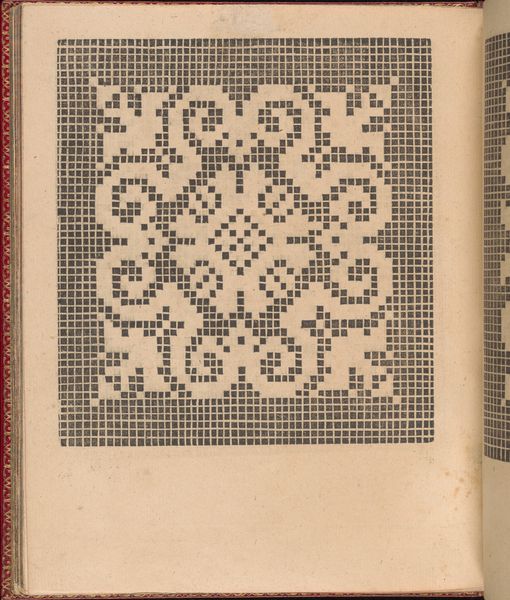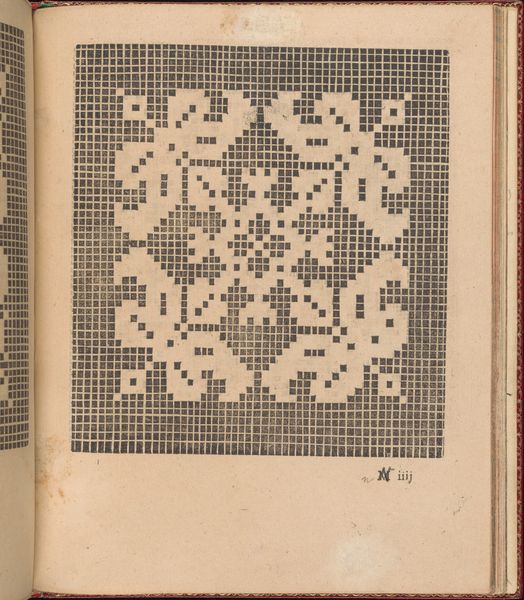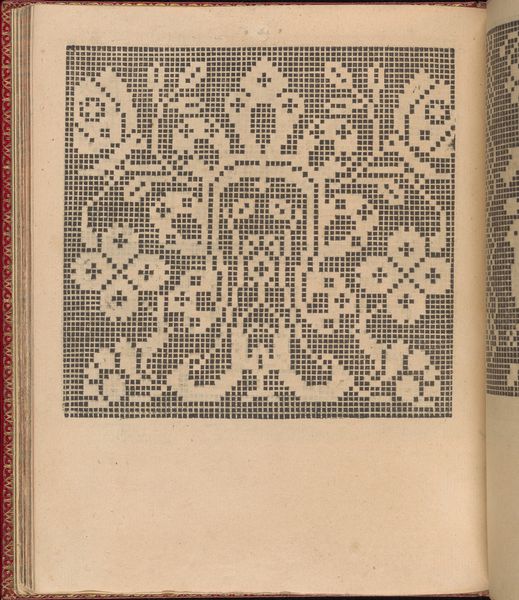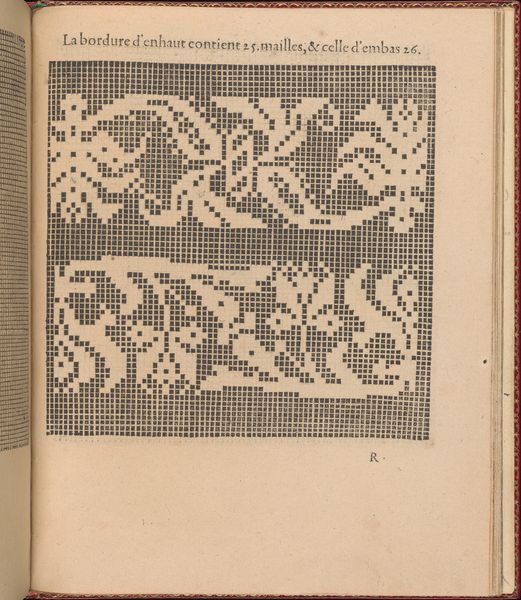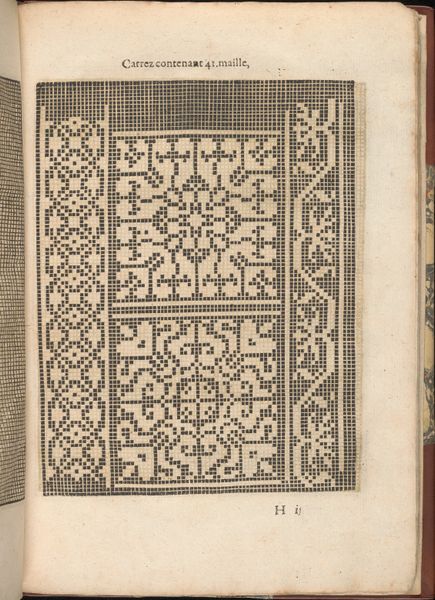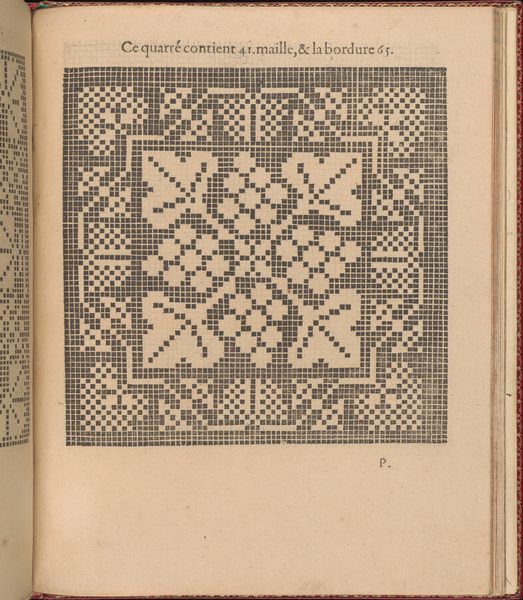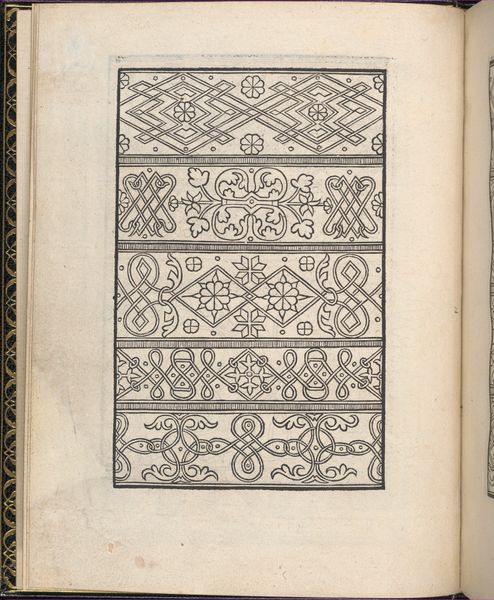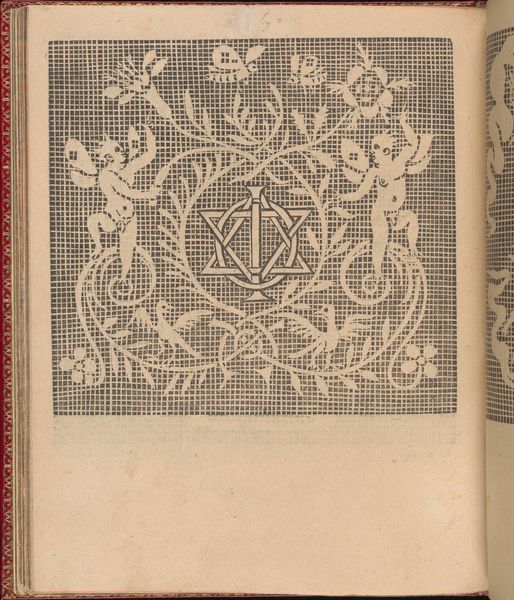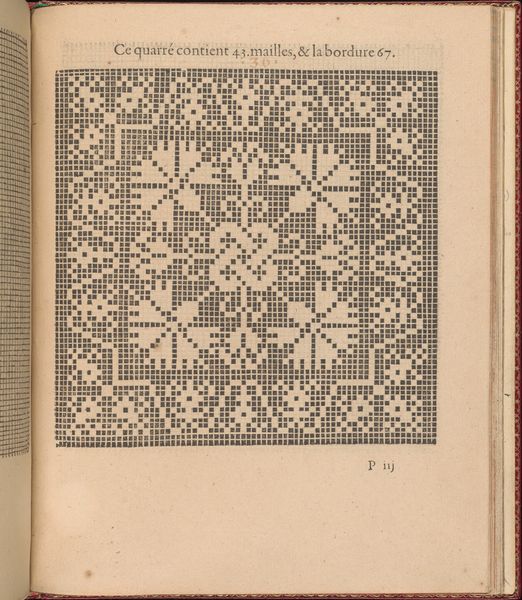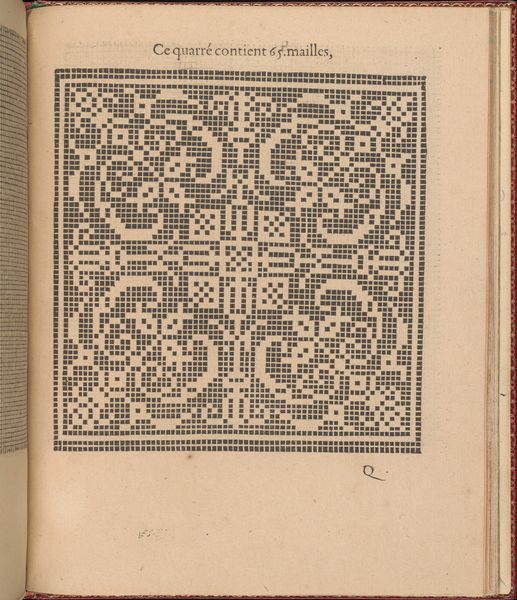
Les Singuliers et Nouveaux Portraicts... page 50 (verso) 1588
0:00
0:00
drawing, graphic-art, print
#
drawing
#
graphic-art
# print
#
book
#
11_renaissance
#
linocut print
#
organic pattern
#
geometric
Dimensions: Overall: 8 1/16 x 6 5/16 in. (20.5 x 16 cm)
Copyright: Public Domain
Curator: This captivating page comes from "Les Singuliers et Nouveaux Portraicts..." a pattern book printed in 1588, the work of Federico de Vinciolo. What’s your first impression? Editor: Intricate! It feels both antique and strangely modern. That pixelated, almost digital aesthetic, rendering an organic floral shape, is lovely. It’s giving me very elaborate needlepoint pillow vibes! Curator: Right. Vinciolo was not creating ‘high art’ in the traditional sense. These pattern books, especially for lace-making and embroidery, blurred those boundaries. They were, after all, a means of production, guiding the hand in the creation of valuable textiles. Editor: Exactly! This wasn’t just art for art's sake; this was functional art, designed to be used, repeated, interpreted, translated into tangible objects by someone's labor, stitched into something new and personal. Curator: Consider the process involved. This is a linocut print, meaning each block of the pattern book had to be painstakingly carved to precise specifications before being inked and pressed. A very slow process with a specific end-use. Editor: Imagine the concentration, the focus required to produce each grid. Then imagine the hours women–mostly women, I presume–spent interpreting those patterns in thread, one painstaking stitch at a time. So much labour wrapped up in an apparently simple geometric flower. It makes you wonder who profited. Curator: Absolutely. These pattern books were commodities themselves, a growing industry as textile production increased across Europe. They provided access to increasingly complex designs and new fashion, and they spread cultural influence at the same time. Editor: A sort of early internet, transferring aesthetics through carefully carved blocks of wood! Knowing that history makes looking at this small grid feels incredibly powerful, laden with lives and labour and commerce. Curator: Indeed, and seeing the traces of those things in the visual texture itself elevates the drawing beyond its simple function. A lot to unpack for a single printed page, don't you think? Editor: It is, it really is. Thanks for putting it in perspective!
Comments
No comments
Be the first to comment and join the conversation on the ultimate creative platform.
